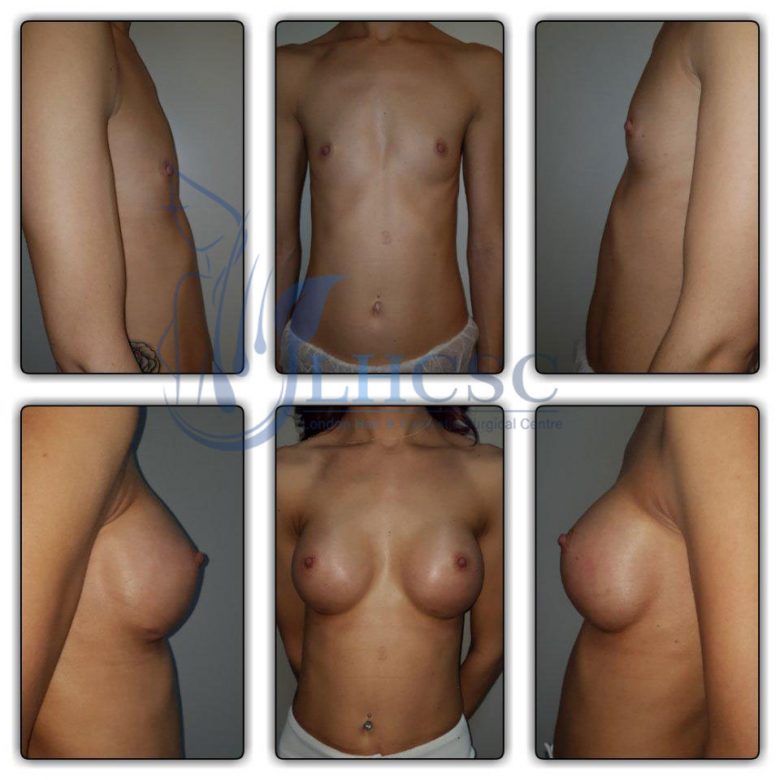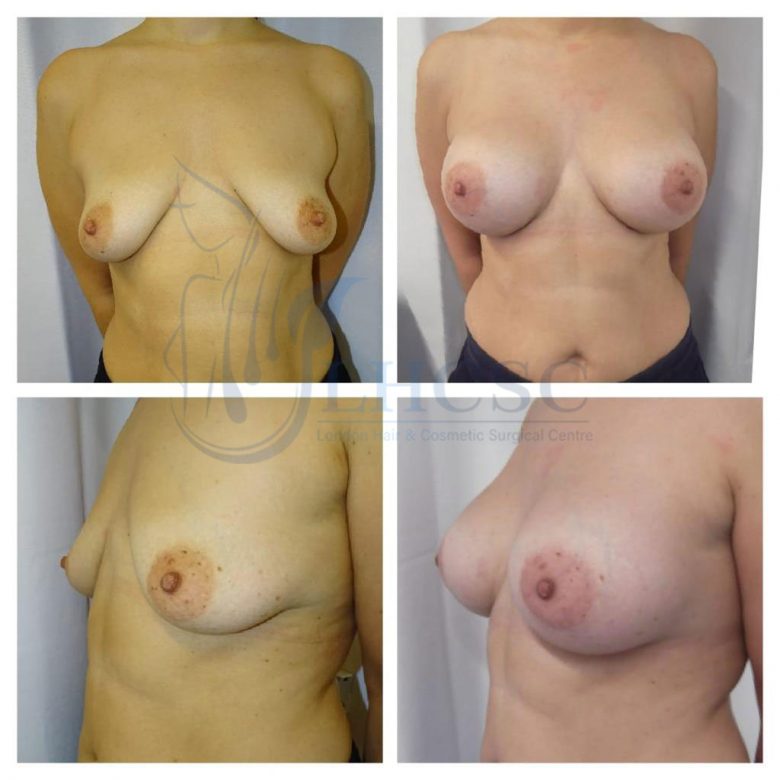Overview
Breasts can be made larger by placing an implant either under the breast tissue or behind the muscle on which the breast lies. Implants are usually inserted through incisions in the fold under the breast (i.e. inframammary fold). Alternatively, the incisions may be made around the areola or in the armpit.
What does the operation involve?
Breast augmentation is one of the safest cosmetic operations in the UK. However, no procedure is without risk. The operation is a day case general anaesthetic and no drains are required. Tissue-based planning is used to make sure the correct size and shape of the implant are used to fit your frame.
How do you select the correct implant size?
Implant size is best selected with tissue-based planning principles. The patient’s implant is selected using her personal measurements as well as her desired “look” to select the appropriate implant. All women have different breast types, shapes, and sizes: there are no two breasts that are exactly the same. The measurements of your breast will determine the implant size that fits your breast the best. The goal with selecting the appropriate size is not only to produce a natural and appropriate look but also to help with lowering risks of complications and give you longevity.
Which implants does LHCSC routinely use?
I routinely use Mentor implants for my breast patients in the NHS. Mentor is an American company who manufactures its implants in Europe. Mentor has had their implants approved by the Food and Drug Administration (FDA), which has stronger regulations than the European authorities. Their implants have been rigorously studied by independent researchers and have the best ten-year follow-up results available.
Will the implant be placed under the muscle or under the breast?
The tissue plane of breast implant placement is dependent on the amount of breast tissue present and tissue laxity. If there is plenty of breast tissue a ‘subglandular’ approach is used. However, if there is little breast tissue an option is to place the implant partially under the muscle and breast tissue, a so-called ‘dual plane approach.
What would you expect post-operatively?
The procedure takes 1-2 hours. You will be in recovery until you are safe to be discharged back to the ward. You will feel some discomfort after the local anaesthetic has worn off. Drains are not used in primary breast augmentation, in some revision cases, drains are used. You will go home on the day and it is best to get someone to drive you home or take a taxi. Wounds are checked for 1 week in the dressings clinic, you can shower 48 hours after the operation.
Do breast implants increase the chances of cancer?
Research studies have shown that breast implants do not increase the chances of breast cancer. If you are 30 and over and have a strong family history of breast cancer it is advisable to get a mammogram before and after your breast augmentation. This will serve as a baseline assessment.
Recently there have been reports of a rare lymphoma (ALCL) – Anaplastic Large Cell Lymphoma (ALCL), which is a type of cancer involving cells of the immune system. This has been associated with microtextured implants and these have been taken off the market. Although very rare, the reported risk is 1:30000 and patients should be aware of this condition. It can present with late redness and swelling of the breast and the treatment is implant and capsule removal.
Will breast augmentation affect breastfeeding?
No, a breast augmentation will not routinely affect breastfeeding and a silicone breast implant will not affect breast milk and it is safe to breastfeed your child.
What are the complications after breast augmentation?
Our consultants offer a cooling-off period before you decide to go ahead with a breast augmentation. Breast augmentation is a lifetime commitment. Therefore it is essential that you are making the appropriate choice and understand all the possible complications of the operation. You may need revision as the years go by and you need to be prepared personally and financially for this. Nobody needs urgent breast augmentation. If you are not offered a cooling-off period, or you are put under pressure to proceed, you should walk away and look elsewhere.
List of possible complications:
- Infection – this is rare in primary breast augmentation, if the infection does not respond to antibiotics the implant will have to be removed and replaced at 3-6 months
- Bleeding – may result in a return to theatre
- Changes to sensation in the breast
- Wound breakdown
- Asymmetry between breasts
- Implant rupture
- Implant wrinkling
- Capsular contracture – 10% at 5 years this occurs as the body responds by scarring around the breast implant. In severe cases, capsular contracture can result in distortion and pain
Procedure Summary of Breast Augmentation
- Anaesthetic: General Anaesthetic
- Operative time: 1-2 hours
- Hospital Stay: Daycase
- Time off work: up to 2 weeks
- Recovery Time: 1-3 weeks





